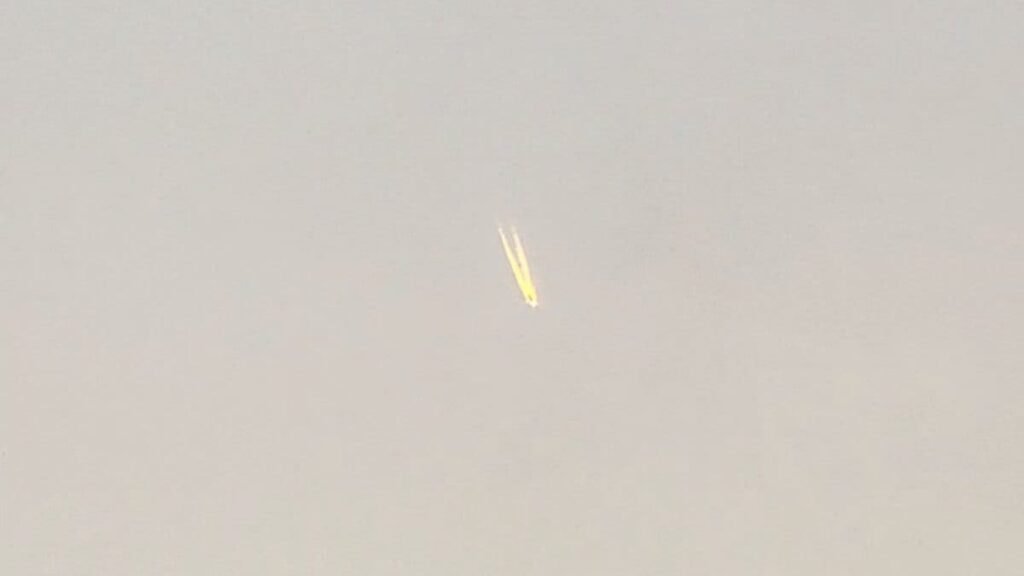Latest update:
The comet’s green glow is caused by the fluorescence of diatomic carbon (C₂) when exposed to the sun’s ultraviolet radiation, not reflection.


Many people from the city shared photos of the comet on social media. (Image via X/@pawar_vinay)
A faint green comet, officially named C/2025 A6 (Lemmon), was briefly seen above the western horizon of Bengaluru on Saturday evening.
Many people from the city shared photos of the comet on social media, showing its bright green coma and faint dust tail, which can be seen for only a few minutes before disappearing below the horizon.
“I’m so happy I saw the comet in the sky today @ #Bengaluru,” one user tweeted, while another wrote, “I noticed something in the sky this morning. #Bengaluru #NammaBengaluru.”
Comet Lemmon was first identified in January 2025 by astronomers at the Mount Lemmon Observatory in Arizona, United States. It gradually becomes brighter as it approaches the Sun and remains visible to observers in the Northern Hemisphere using binoculars. However, its brightness fluctuates as the sun’s heat causes jets of gas and dust to emerge from its surface, a process known as outgassing.
Astrophotographer Deepak Chaudhary, founder of astronomy awareness platform thegreatbeyond.in, captured images of the comet from the roof of the Co-Evolve high-rise building in Bengaluru using the William Optics Zenithstar 61 refracting telescope. The images showed a green coma and a short, faint dust tail that could only be seen briefly before the comet dipped below the horizon.
The comet’s green glow is caused by the fluorescence of diatomic carbon (C₂) when exposed to the sun’s ultraviolet radiation, not reflection. Experts said the gas is only present in the coma and quickly disintegrates, making the tail appear almost colorless Hindu.
Chaudhry noted that photographing the comet from a city with heavy light pollution was difficult. “The image window was only a few minutes before it was very low,” he told the publication. “Urban astrophotography is more about accuracy than pinpointing location.”
The News Desk is a team of passionate editors and writers who break down and analyze the most important events unfolding in India and abroad. From live updates to exclusive reports to in-depth explanations, the office offers… Read more
02 Nov 2025 at 6:26 PM IST
Read more












